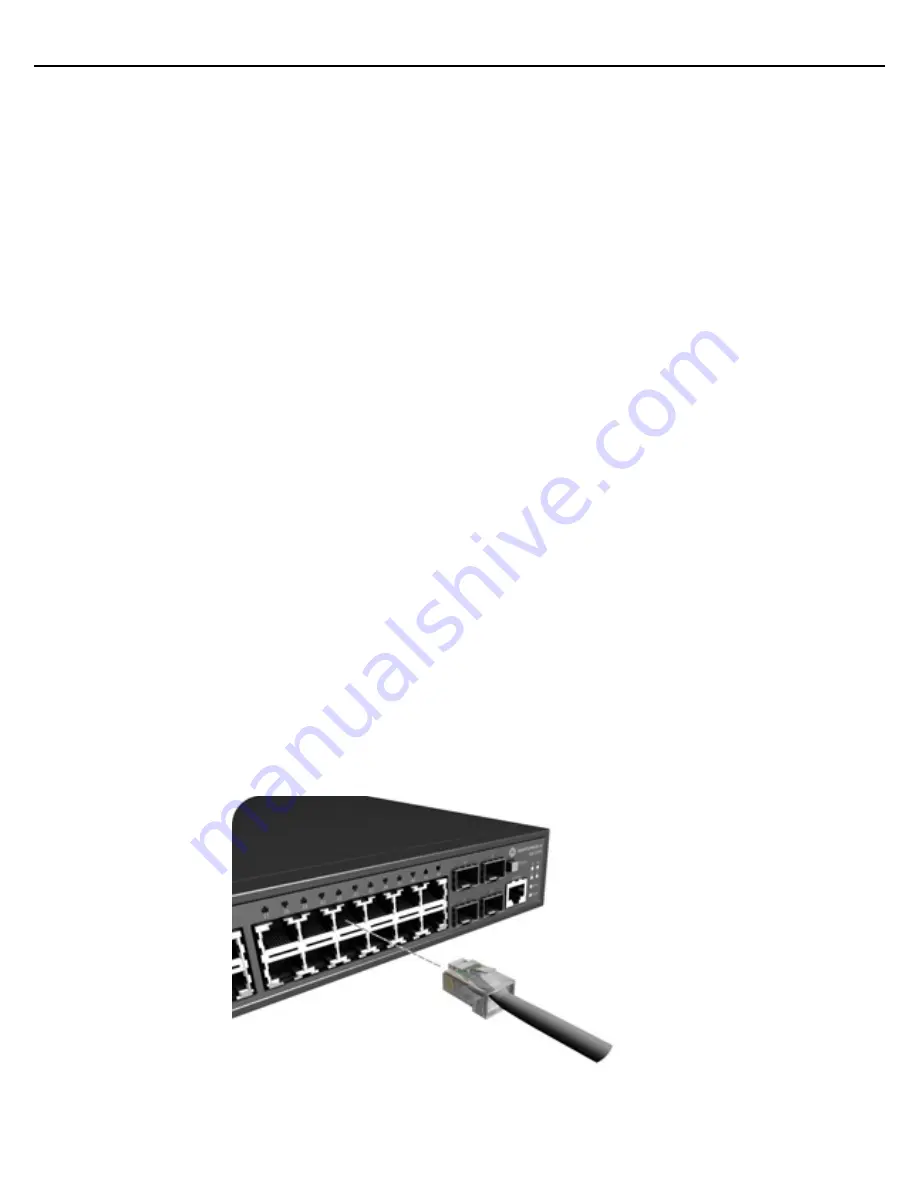
Installation Guide
21
3.4.3 Cable Requirements
All Category 5 UTP cables that are used for 100BASE-TX connections should also work for 1000BASE-T, providing
that all four wire pairs are connected. However, it is recommended that for all critical connections, or any new
cable installations, Category 5e (enhanced Category 5) or Category 6 cable should be used. The Category 5e and
Category 6 specifications include test parameters that are only recommendations for Category 5. Therefore, the
first step in preparing existing Category 5 cabling for running 1000BASE-T is a simple test of the cable installation
to be sure that it complies with the IEEE 802.3-2008 standards.
3.4.4 Power-over-Ethernet
The switch supports both IEEE 802.3af and IEEE 802.3at-2009 PoE standards that enable DC power to be supplied
from the switch’s RJ-45 copper ports to connected devices by utilizing certain pairs of the connecting Ethernet
cable.
For the EX-3524, the total PoE power delivered by all ports cannot exceed the 390 W power budget. This means
that up to 12 ports can supply a maximum 30 W of power simultaneously to connected devices, or all 24 ports can
supply a maximum of 15.4 W.
For the EX-3548, the total PoE power delivered by all ports cannot exceed the 779 W power budget. This means
that up to 24 ports can supply a maximum 30 W of power simultaneously to connected devices, or all 48 ports can
supply a maximum of 15.4 W simultaneously.
Any PoE-compliant device attached to a port can directly draw power from the switch over the Ethernet cable
without requiring its own separate power source. This capability gives network administrators centralized power
control for devices such as IP phones and wireless access points, which translates into greater network
availability.
To connect 100BASE-T cables to RJ-45 ports:
1.
Consider network and cabling requirements to select an appropriate transceiver type that is also
compatible with the switch transceiver support.
















































